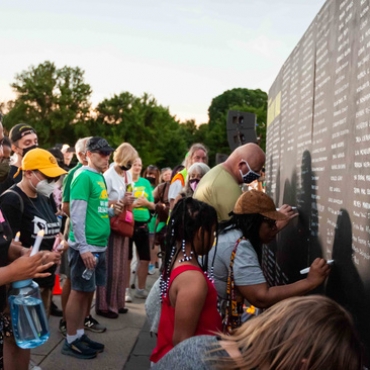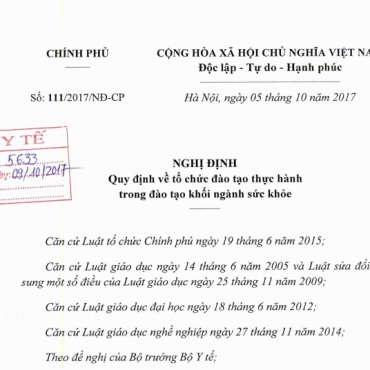Liên hệ tuyển sinh
Hợp tác Quốc tế
Neutralizing Antibodies Against SARS-CoV-2 Variants After Infection and Vaccination
Neutralizing Antibodies Against SARS-CoV-2 Variants After Infection and Vaccination
Venkata Viswanadh Edara, PhD1; William H. Hudson, PhD2; Xuping Xie, PhD3; et alRafi Ahmed, PhD2; Mehul S. Suthar, PhD1
Author Affiliations Article Information
JAMA. 2021;325(18):1896-1898. doi:10.1001/jama.2021.4388
Serum neutralizing antibodies rapidly appear after SARS-CoV-2 infection1 and vaccination2 and are maintained for several months.3,4 The emergence of SARS-CoV-2 variants has raised concerns about the breadth of neutralizing-antibody responses. We compared the neutralizing-antibody response to 4 variants in infected and vaccinated individuals to determine how mutations within the spike protein are associated with virus neutralization.
Methods
Serum samples were obtained from 3 groups of individuals. At Emory University, hospitalized adults with SARS-CoV-2 infection (polymerase chain reaction confirmed) were enrolled 5 to 19 days after symptom onset (July 2020). Infected convalescent individuals (polymerase chain reaction or antigen test confirmed) were enrolled 32 to 94 days after symptom onset (March to August 2020). Deidentified serum samples drawn 14 days after the second dose (100-μg cohort) from individuals in the mRNA-1273 phase 1 clinical trial2 were obtained from the National Institutes of Health. See the eAppendix in the Supplement for participant details. Institutional review board approval was obtained from Emory University and Advarra; all participants provided written informed consent.
Four variants were examined, chosen to represent the original SARS-CoV-2 strain and emerging variants with mutations in the spike protein. The first variant, nCoV/USA_WA1/2020 (A.1 lineage), closely resembled the original Wuhan strain and the spike used in the mRNA-1273 vaccine, and was propagated from an infectious SARS-CoV-2 clone. The second variant, EHC-083E (B.1 lineage), containing a D614G mutation within the spike, was the predominant circulating strain at the time of the study and was isolated from a residual nasopharyngeal swab from a patient in Atlanta, Georgia, in March 2020 (SARS-CoV-2/human/USA/GA-EHC-083E/2020). The third variant, B.1.1.7 (SARS-CoV-2/human/USA/CA_CDC_5574/2020), was originally identified in the UK and of concern because of increased transmissibility. It contained several spike mutations and was isolated from a residual nasopharyngeal swab from a patient in San Diego, California, in December 2020. The fourth variant, N501Y SARS-CoV-2 virus, containing a mutation in the critical receptor binding domain of the spike that is present across multiple emerging variants, including the B.1.1.7 variant in this study, was generated from an infectious clone as previously described.5 This virus is not found in nature.
Live-virus focus reduction neutralization tests (FRNTs) were performed as previously described.6 See the eAppendix in the Supplement for details on the laboratory methods. FRNT50 titers, which represent the reciprocal dilution of serum that neutralizes 50% of the input virus, were interpolated with a 4-parameter nonlinear regression, and geometric mean titers (GMTs) were calculated with 95% CI in GraphPad Prism version 8.4.3. Kruskal-Wallis test was used to compare FRNT50 GMTs between the variants, followed by Dunn’s multiple comparison post hoc test. We determined P < .05 (2 sided) to define statistical significance.
Results
Twenty acutely infected COVID-19 patients provided serum samples (mean age, 56.6 years; 50% men). The FRNT50 GMT for the A.1 variant was 186 (95% CI, 90-383); for B.1, 110 (95% CI, 57-209); for B.1.1.7, 116 (95% CI, 62-215); and for N501Y, 141 (95% CI, 74-269). Comparison of the FRNT50 GMT of the variants was not statistically significant (Figure).
Twenty convalescent individuals provided serum samples (mean age, 45 years; 55% men). The FRNT50 GMT for the A.1 variant was 168 (95% CI, 113-249); for B.1, 91 (95% CI, 60-138); for B.1.1.7, 145 (95% CI, 96-220); and for N501Y, 145 (95% CI, 76-172). Comparison of the FRNT50 GMT of the variants was not statistically significant.
Serum samples were available for 14 mRNA-1273 vaccinated individuals2 (age range, 18-55 years; 43% men). The FRNT50 GMT for the A.1 variant was 1709 (95% CI, 1412-2069); for B.1, 804 (95% CI, 632-1023); for B.1.1.7, 965 (95% CI, 695-1341); and for N501Y, 994 (95% CI, 777-1272). Comparisons of the FRNT50 GMT of B.1, B.1.1.7, and the N501Y variant were not statistically significant. The FRNT50 GMTs for the B.1 (P < .001), B.1.1.7 (P = .02), and N501Y (P = .02) variants were statistically significantly lower than that for the A.1 variant.
Discussion
This study found neutralizing activity of infection- and vaccine-elicited antibodies against 4 SARS-CoV-2 variants, including B.1, B.1.1.7, and N501Y. Because neutralization studies measure the ability of antibodies to block virus infection, these results suggest that infection- and vaccine-induced immunity may be retained against the B.1.1.7 variant. As additional variants emerge, neutralizing-antibody responses after infection and vaccination should be monitored.
Limitations include the small sample size, possible selection bias, lack of clinical outcomes, and how neutralization titers correlate with protection.
Section Editor: Jody W. Zylke, MD, Deputy Editor.
Article Information
Corresponding Author: Mehul S. Suthar, PhD, Yerkes National Primate Research Center, Emory University, 954 Gatewood Rd, Room 2022, Atlanta, GA 30329-4208 (msuthar@emory.edu).
Accepted for Publication: March 8, 2021.
Published Online: March 19, 2021. doi:10.1001/jama.2021.4388
Author Contributions: Dr Suthar had full access to all of the data in the study and takes responsibility for the integrity of the data and the accuracy of the data analysis.
Concept and design: Edara, Ahmed, Suthar.
Acquisition, analysis, or interpretation of data: Edara, Hudson, Xie, Suthar.
Drafting of the manuscript: Edara, Suthar.
Critical revision of the manuscript for important intellectual content: All authors.
Statistical analysis: Edara, Hudson, Suthar.
Obtained funding: Suthar.
Administrative, technical, or material support: Xie, Suthar.
Supervision: Edara, Ahmed, Suthar.
Data visualization: Hudson.
Conflict of Interest Disclosures: None reported.
Funding/Support: This work was supported in part by grants NIH P51 OD011132, 3U19AI057266-17S1 CCHI Immune Memory Supplement, U19AI090023, R01AI127799, R01AI148378, K99AI153736, and UM1AI148684 to Emory University; R00AG049092 and R24AI120942 to the University of Texas Medical Branch from the National Institute of Allergy and Infectious Diseases, National Institutes of Health; the Oliver S. and Jennie R. Donaldson Charitable Trust; the Emory Executive Vice President for Health Affairs Synergy Fund award; the Pediatric Research Alliance Center for Childhood Infections and Vaccines and Children’s Healthcare of Atlanta; COVID-Catalyst-I3 Funds from the Woodruff Health Sciences Center and Emory School of Medicine; Woodruff Health Sciences Center 2020 COVID-19 CURE Award; and the Vital Projects/Proteus funds.
Role of the Funder/Sponsor: The funders had no role in the design and conduct of the study; collection, management, analysis, and interpretation of the data; preparation, review, or approval of the manuscript; and decision to submit the manuscript for publication.
Disclaimer: The findings and conclusions in this report are those of the authors and do not necessarily represent the official position of the Centers for Disease Control and Prevention.
Additional Contributions: We acknowledge the following individuals for providing reagents, discussion, and editing of the manuscript: Emory University School of Medicine, Atlanta, Georgia: Katharine Floyd, BS, Lilin Lai, MD, Meredith Gardner, PhD, Anne Piantadosi, MD, Jesse J. Waggoner, MD, Ahmed Babiker, MBBS, David S. Stephens, MD, Evan J. Anderson, MD, Srilatha Edupuganti, MD, MPH, Nadine Rouphael, MD, MSc, Grace Mantus, MS, Lindsay Nyhoff, PhD, Jens Wrammert, PhD, Max W. Adelman, MD, MSc, Rebecca Fineman, BS, Shivan Patel, MD, Rebecca Byram, ME, Dumingu Nipuni Gomes, MPH, Garett Michael, BS, BA, Hayatu Abdullahi, MD, Erin M. Scherer, PhD, Nour Beydoun, MD, Bernadine Panganiban, BS, Nina McNair, BS, Kieffer Hellmeister, BA, Jamila Pitts, BS, Joy Winters, MS, Jennifer Kleinhenz, BS, Jacob Usher, BS, and James O’Keefe, MD; UC San Diego School of Medicine, California: Louise C. Laurent, MD, PhD, Peter De Hoff, PhD, Holly Valentine, BA, MPH, Rob Knight, PhD, Phoebe Seaver, BA, MPH, Gene W. Yeo, PhD, MBA, Shashank Sathe, BTech, MS, and Aaron Carlin, MD, PhD; The Scripps Research Institute, La Jolla, California: Kristian G. Andersen, PhD, Mark Zeller, PhD, Karthik Gangavarapu, BS, Catie Anderson, BA, and Alaa Abdel Latif, BA, MPhil, BS; University of Texas Medical Branch, Galveston: Kumari Lokugamage, PhD, Vineet Menachery, PhD, Pei-Yong Shi, PhD; and Centers for Disease Control and Prevention, Atlanta, Georgia: Natalie Thornburg, PhD, Azaibi Tamin, PhD, Jennifer L. Harcourt, PhD, Maureen Diaz, PhD, Suxiang Tong, PhD, Ying Tao, PhD, Jing Zhang, PhD, Phili Wong, MS, Shilpli Jain, PhD, and Jennifer Folster, PhD. No one received financial compensation for his or her contributions. We thank the mRNA-1273 phase 1 study team and the Division of Microbiology and Infectious Diseases for providing clinical samples.
References
1.Suthar MS, Zimmerman MG, Kauffman RC, et al. Rapid generation of neutralizing antibody responses in COVID-19 patients. Cell Rep Med. 2020;1(3):100040. doi:10.1016/j.xcrm.2020.100040PubMedGoogle Scholar
2.Jackson LA, Anderson EJ, Rouphael NG, et al; mRNA-1273 Study Group. An mRNA vaccine against SARS-CoV-2. N Engl J Med. 2020;383(20):1920-1931. doi:10.1056/NEJMoa2022483PubMedGoogle ScholarCrossref
3.Dan JM, Mateus J, Kato Y, et al. Immunological memory to SARS-CoV-2 assessed for up to 8 months after infection. Science. 2021;371(6529):eabf4063. doi:10.1126/science.abf4063PubMedGoogle Scholar
4.Widge AT, Rouphael NG, Jackson LA, et al; mRNA-1273 Study Group. Durability of responses after SARS-CoV-2 mRNA-1273 vaccination. N Engl J Med. 2021;384(1):80-82. doi:10.1056/NEJMc2032195PubMedGoogle ScholarCrossref
5.Liu Y, Liu J, Xia H, et al. Neutralizing activity of BNT162b2-elicited serum: preliminary report. N Engl J Med. Published online February 17, 2021. doi:10.1056/NEJMc2102017PubMedGoogle Scholar
6.Vanderheiden A, Edara VV, Floyd K, et al. Development of a rapid focus reduction neutralization test assay for measuring SARS-CoV-2 neutralizing antibodies. Curr Protoc Immunol. 2020;131(1):e116. doi:10.1002/cpim.116PubMedGoogle Scholar
Source: https://jamanetwork.com/journals/jama/fullarticle/2777898?guestAccessKey=c89e6c58-2216-4490-b7f8-c669205c4b18&utm_source=silverchair&utm_medium=email&utm_campaign=article_alert-jama&utm_content=etoc&utm_term=051121
Các tin khác
- One in 10 People Who Had Omicron Got Long COVID: Study ( 20:25 - 01/06/2023 )
- Physical Medicine Academy Issues Guidance on Long COVID Neurologic Symptoms ( 09:58 - 19/05/2023 )
- SARS-CoV-2 đi qua nhau thai và lây nhiễm não của hai trẻ sơ sinh: “Đây là trường hợp đầu tiên” ( 16:55 - 10/04/2023 )
- Breakthrough' Study: Diabetes Drug Helps Prevent Long COVID ( 08:55 - 15/03/2023 )
- BCG vaccine (thuốc chủng ngừa bệnh lao) & SARS-CoV 2 (covid-19) infection ( 10:08 - 27/10/2022 )
- Đại dịch COVID-19 đã kết thúc? ( 09:11 - 22/09/2022 )
- Dị hình giới tính ở COVID-19: Ý nghĩa tiềm năng về lâm sàng và sức khỏe cộng đồng ( 09:22 - 19/03/2022 )
- COVID-19 Update ( 21:00 - 06/03/2022 )
- Một người có thể tái mắc Covid-19 bao nhiêu lần ?? ( 20:25 - 06/03/2022 )
- T-cells from common colds can provide protection against COVID-19 - study ( 08:25 - 11/01/2022 )














